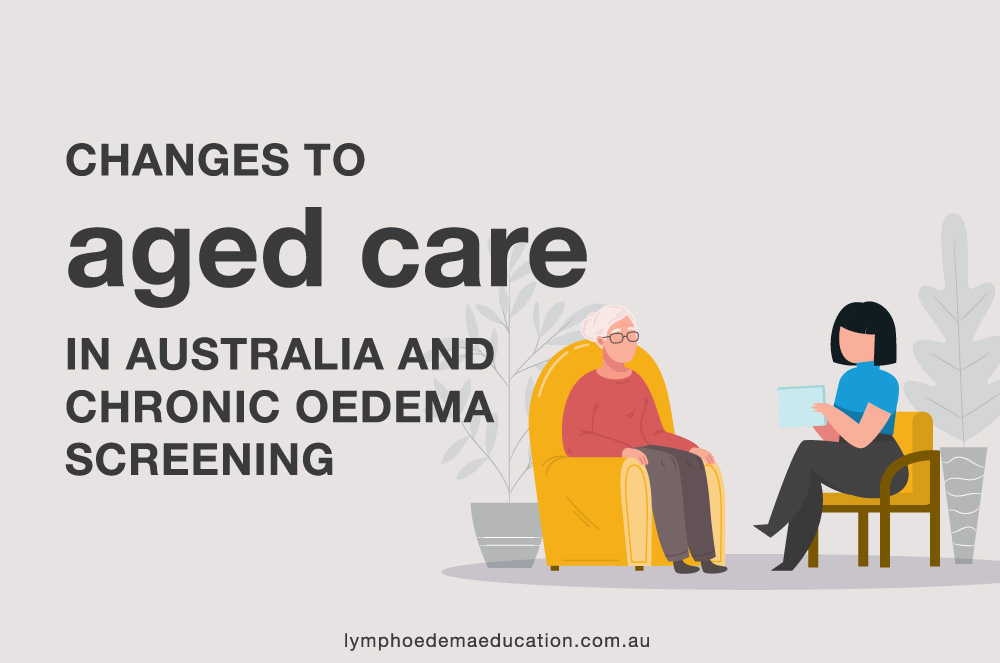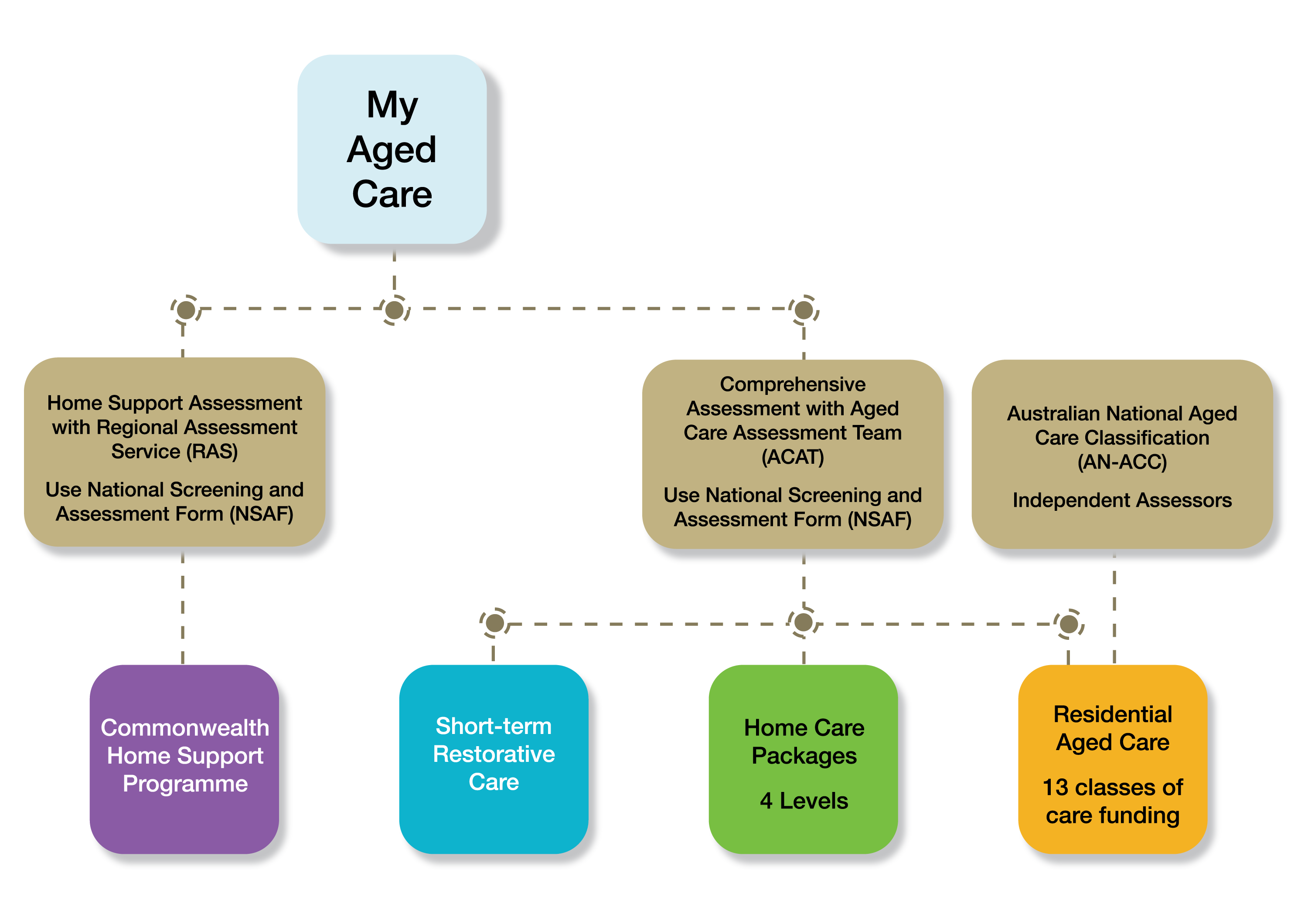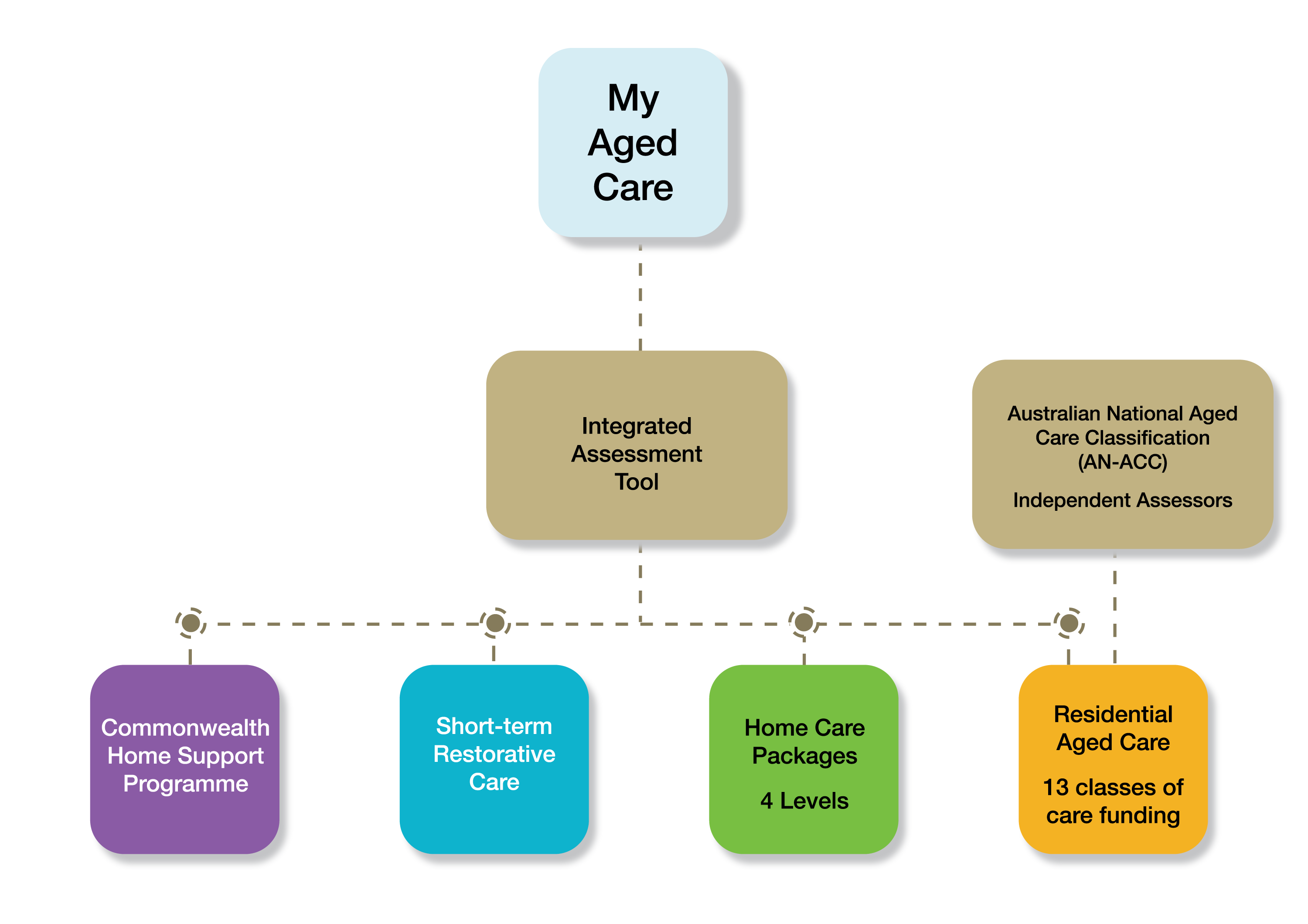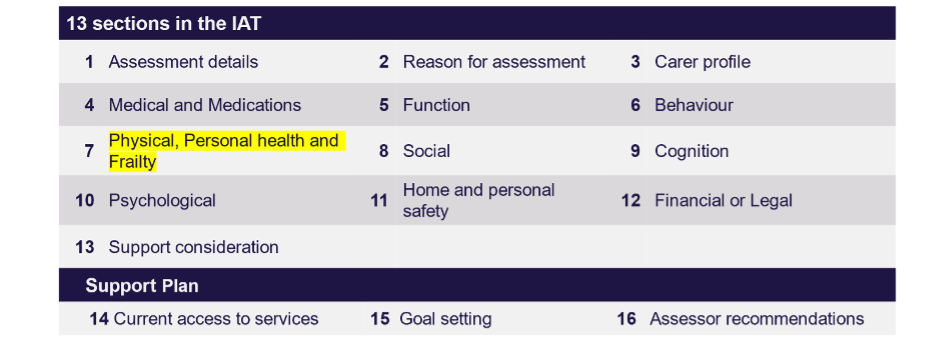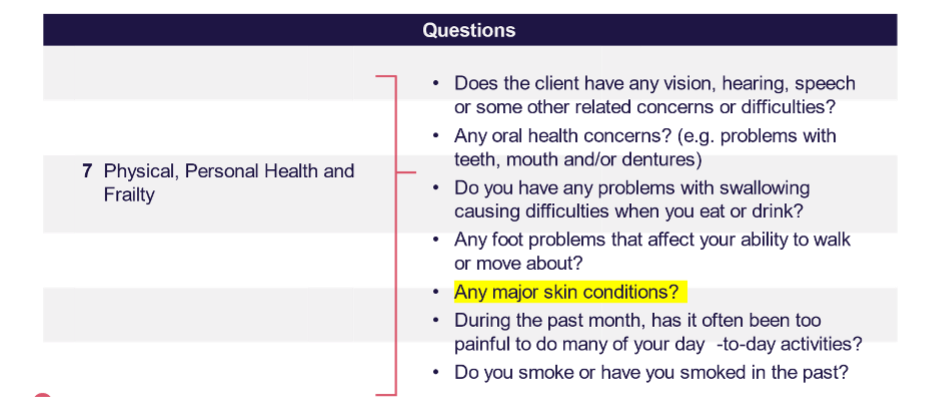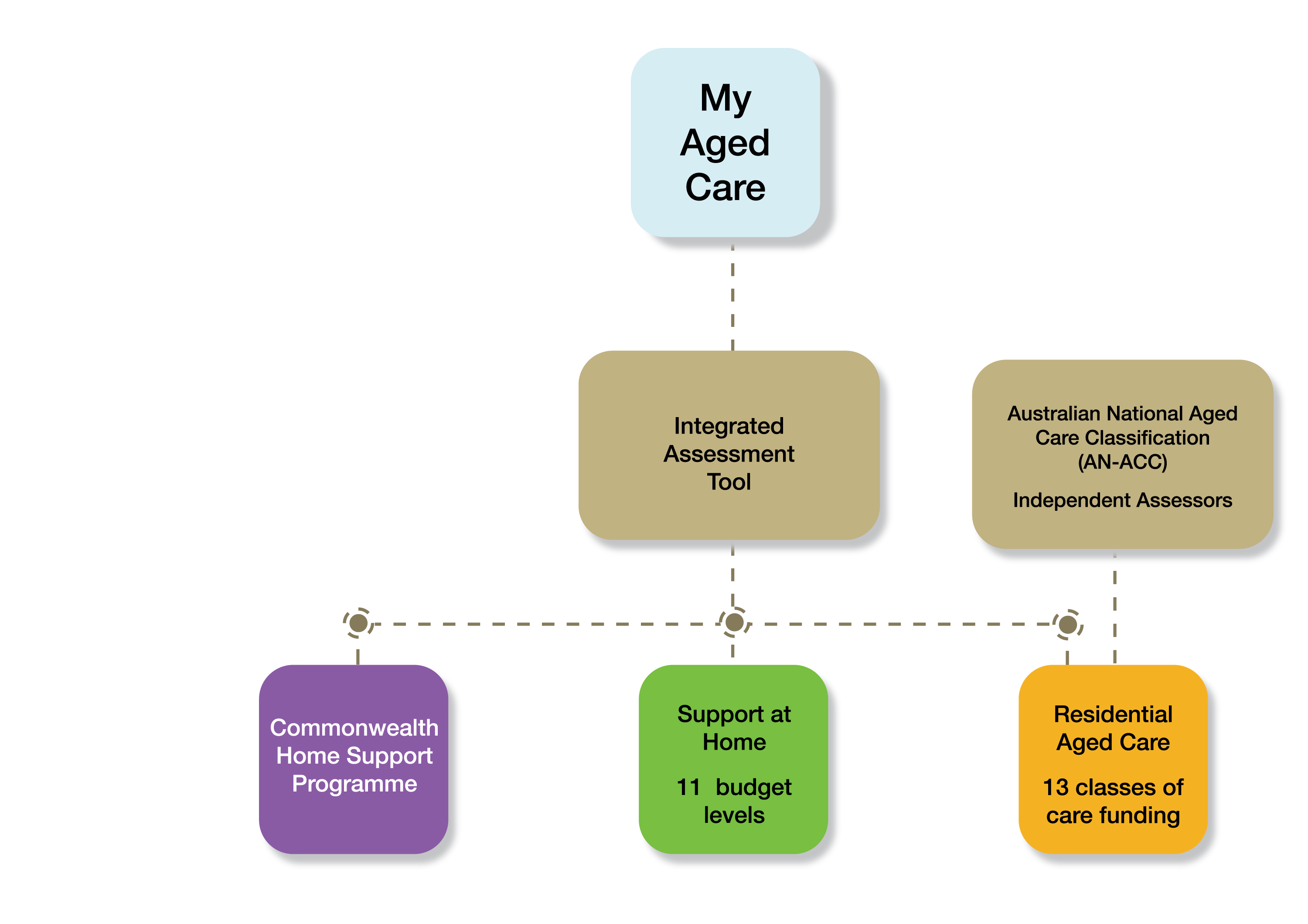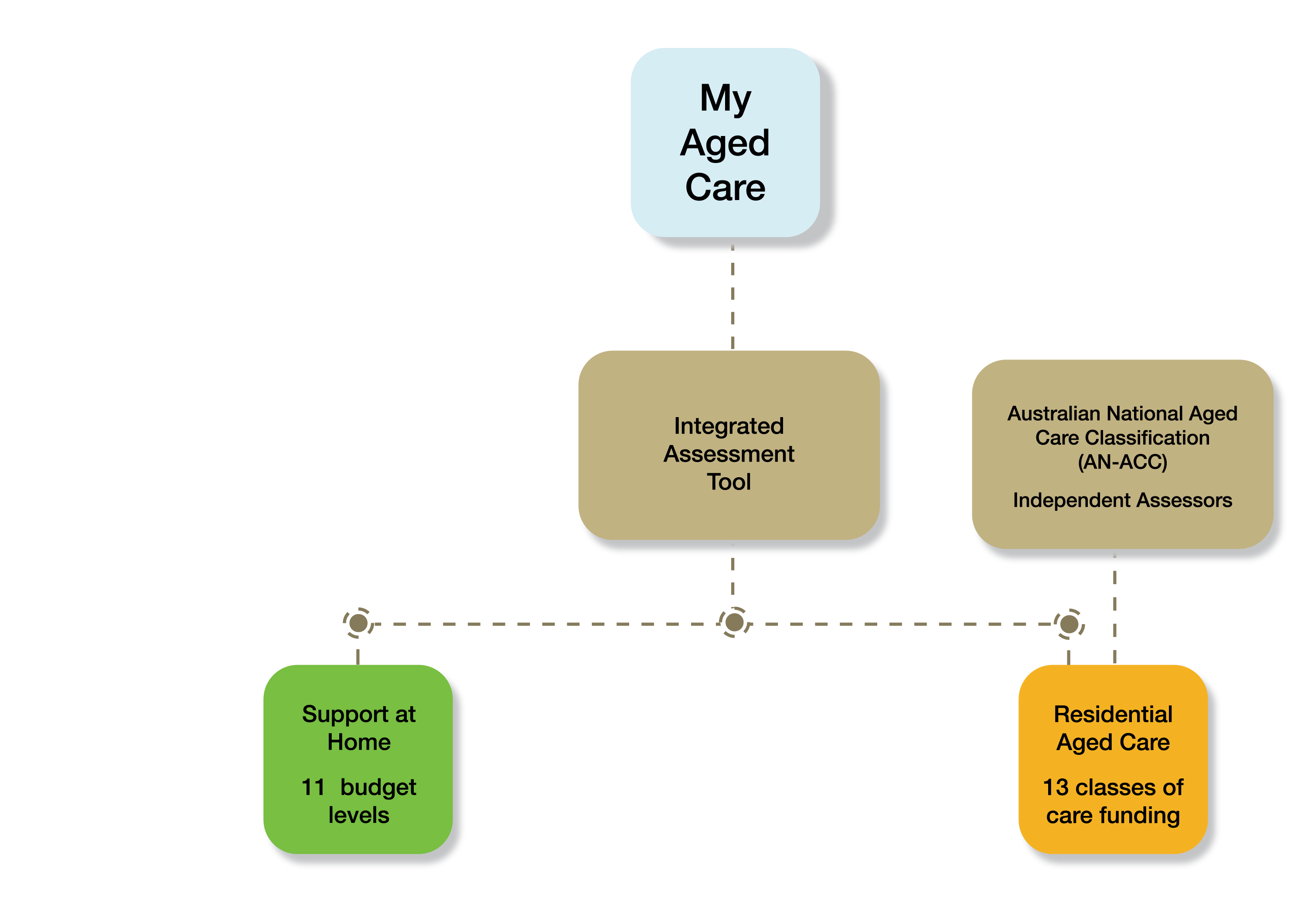Changes to Aged Care in Australia and Chronic Oedema Screening
Australia is undergoing significant changes to aged care, driven by the 2021 Royal Commission into aged care, quality and safety. The Royal Commission has highlighted the need for improved quality and safety standards in aged care, leading to reforms that aim to keep older people in their homes for as long as possible, in line with the government’s focus. (Commonwealth of Australia, 2021). These changes must be considered in framing how oedema is managed.
Current Aged Care Framework
My Aged Care is a free service that helps older people and their carers navigate the aged care system. This service can organise an assessment to determine the level of care the person needs. The diagram below shows the types of assessments. They use the national screening and assessment form. The home support assessment is for low level care and feeds into the Commonwealth Home Support Programme. The comprehensive assessment with the Aged Care Assessment Team (ACAT) determines whether the person needs a home care package or needs significant care in a residential aged care facility. The home care packages range from 1 having lower care needs and progressing to home care package 4 for higher care needs. An ACAT assessment may also determine that the person needs a short burst of intense treatment to help reverse or slow the difficulties the person is having with everyday tasks or assist in returning to independence. Or perhaps respite care is required. If the person is assessed as needing residential aged care, then that person will have a further assessment once they move into the aged care facility. This independent assessment uses the Australian National Aged Care Classification (AN-ACC). This was implemented in October 2022 with 13 classes of care funding and will not undergo any further changes at this stage.
National Aged Care Integrated Assessment Tool
From July 2024, the home support assessment and the comprehensive assessment will be combined to form the integrated assessment tool. At this stage, funding of at-home aged care programmes will remain the same. The diagram below shows these changes.
The integrated assessment tool (IAT) will replace the National Aged Care Screening and Assessment Form (NSAF) to assess people wanting to access government-subsidised aged care.
The tool will enable the assessment workforce to collect more complete information and have the flexibility to record the individual story of each older person and their carers.
The tool will promote quality of assessment by ensuring:
- assessors follow minimum standards for assessments.
- assessments are consistent and standardised so that people with the same needs access the same services.
- assessors tailor service recommendations and referrals to each person’s needs
- assessors work in partnership with the older person accessing care to set goals and plan care, with a focus on reablement.
- older people and their families only have to tell their story once.
The IAT will be implemented by health professionals as well as non-health professionals, depending on the individual’s needs. The assessment aims to be face-to-face unless there is a reason it can’t be. For low-level needs, not all of the sections of the IAT will be included.
The integrated assessment tool (IAT) has 13 sections, as shown in the diagram below. Section 7, physical, personal health and frailty is relevant to chronic oedema.
What does the tool look like?
Ref: https://www.health.gov.au/our-work/single-assessment-system-for-aged-care/assessment-tool
In section 7 the question about any major skin conditions( diagram below) is where chronic oedema will be screened. This is a base question which is mandatory to complete. Therefore, regardless of the level of care the person may need, or whether the assessor is a health professional or not, this question must be completed. The assessor will complete the following:
- Ask the person if they have a history of swelling in their feet and ankles.
- Observe the feet and ankles for the presence of swelling.
- Where possible, perform a 10 second pitting test, which involves pressing the thumb on the top of the foot and behind the ankle bones on both feet. Observe if a dent is created.
- If swelling is observed or a dent is created, a referral to a health professional is instigated for further assessment and management.
Another example: section 7 – Physical, Personal Health and Frailty
Ref: https://www.health.gov.au/our-work/single-assessment-system-for-aged-care/assessment-tool
The inclusion of chronic oedema screening is an important step. Hopefully, it will facilitate both early intervention and management and provide a way to obtain data on the prevalence of chronic oedema in the ageing population.
Future Funding Models for Care at Home
July 2025
In July 2025 home care packages and short-term restorative care will be replaced by support at home (diagram below). The Commonwealth home support programme will remain the same. A new funding model will be introduced with 11 budget levels that cover all clients. Clients can be re-assessed into higher levels as they age. Reasonable prices and client fees will be set by the government. Providers will invoice for services after they are delivered. Extra funds will be available for rural and remote areas. The client will still have a single provider. Details about the 11 budgets and funding for chronic oedema management are not yet available. There will also be a new assistive technology and home support modification scheme. It is hoped that compression garments will be included as part of this scheme.
No earlier than July 2027
Commonwealth home support programme will join the support at home home which will mean there will be a single program for care in the home. Participants can choose to have a single provider or access services from multiple providers. There will be the same funding model across all providers and a single assistive technology & home modification scheme.
Next steps
As health professionals it is important that we keep up to date with changes. The next step will be to make sure that once a referral is made to a medical practitioner, via the integrated assessment tool, appropriate action to manage the chronic oedema occurs. It is also essential that we make sure that we understand the new funding model from July 2025 and that compression garments/wraps are listed on the new assistive technology and home support modification scheme. Funding for compression garments/wraps also needs to be included in residential aged care.
Sources
Commonwealth of Australia. (2021). Royal commission into aged care quality and safety. Care, dignity and respect. C. o. Australia. https://agedcare.royalcommission.gov.au/publications/final-report
My Aged Care https://www.myagedcare.gov.au/
Integrated Assessment Tool https://www.health.gov.au/our-work/single-assessment-system-for-aged-care/assessment-tool
New Aged Care Act and Support at Home program update – https://www.health.gov.au/resources/webinars/new-aged-care-act-and-support-at-home-program-update

